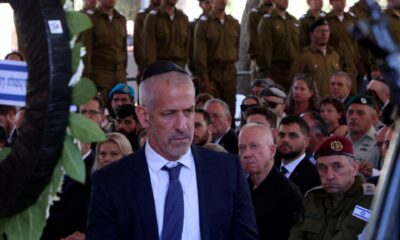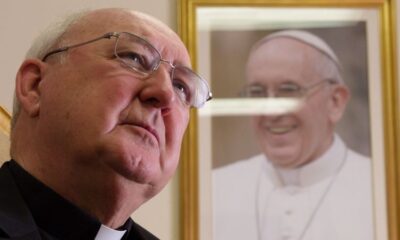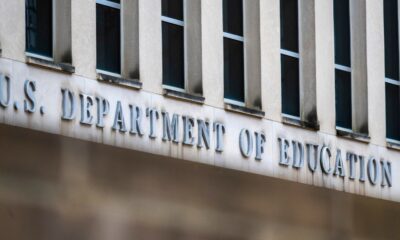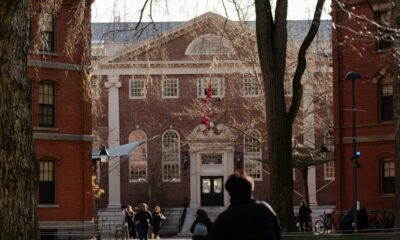CNN
—
On March 13, 2013, Oscar Crespo was watching TV in his native Buenos Aires when he saw the white smoke appearing above the Sistine Chapel at the Vatican: a new pope was elected.
As with millions of Catholics in Latin America, he was curious to know who would succeed Pope Benedict XVI. To his surprise he heard the name Bergoglio – the surname of his childhood friend – and was immediately overwhelmed by emotion, he recalled.
“Bergoglio, Pope! I couldn’t believe it! And right at that moment, my phone started ringing,” Crespo told CNN from Buenos Aires, explaining how he was deluged by callers who knew of their friendship. Shortly after, Crespo watched as Cardinal Jorge Bergoglio appeared at the St. Peter’s Basilica balcony, becoming the first Latin American pope.
His election took Crespo and all of Argentina by surprise, while the rest of the world wondered who Jorge Bergoglio was.
In the following months, the local government even organized a special tour, “the papal circuit,” so tourists and pilgrims could get a glimpse of Bergoglio’s early years in his native Buenos Aires.
Jorge Bergoglio was born in Argentina’s capital, Buenos Aires, on December 17, 1936. The son of Italian immigrants, Mario and Regina, he was the eldest of five siblings.
He spent his childhood and teenage years at his family’s house in the heart of the middle-class neighborhood of Flores. A plaque outside his former home, 531 Membrillar Street, now proudly announces: “Pope Francis lived here.”
Like many South American kids, Bergoglio played soccer with friends around his neighborhood. A plaque on the ground at the Herminia Brumana square in Flores says: “In this plaza neighborhood children used to gather. Here, Jorge M. Bergoglio chased the ball with his friends. Afternoons of games and friendship.”
Young Bergoglio became a big soccer fan, supporting the Argentine team San Lorenzo. His love of the sport and of his team never diminished as pope, with Francis often seen holding San Lorenzo’s jersey, and hosting soccer teams at the Vatican.
“He loved music, dancing, and football. We went to watch so many football games,” Crespo said. He and Bergoglio became friends when they were 13 years old, a bond that endured when the latter became Pope Francis, even though he was never to return to his homeland.
Bergoglio grew up learning about literature and chemistry, among other subjects, and enjoyed everything typical of a teenage boy, Crespo says.
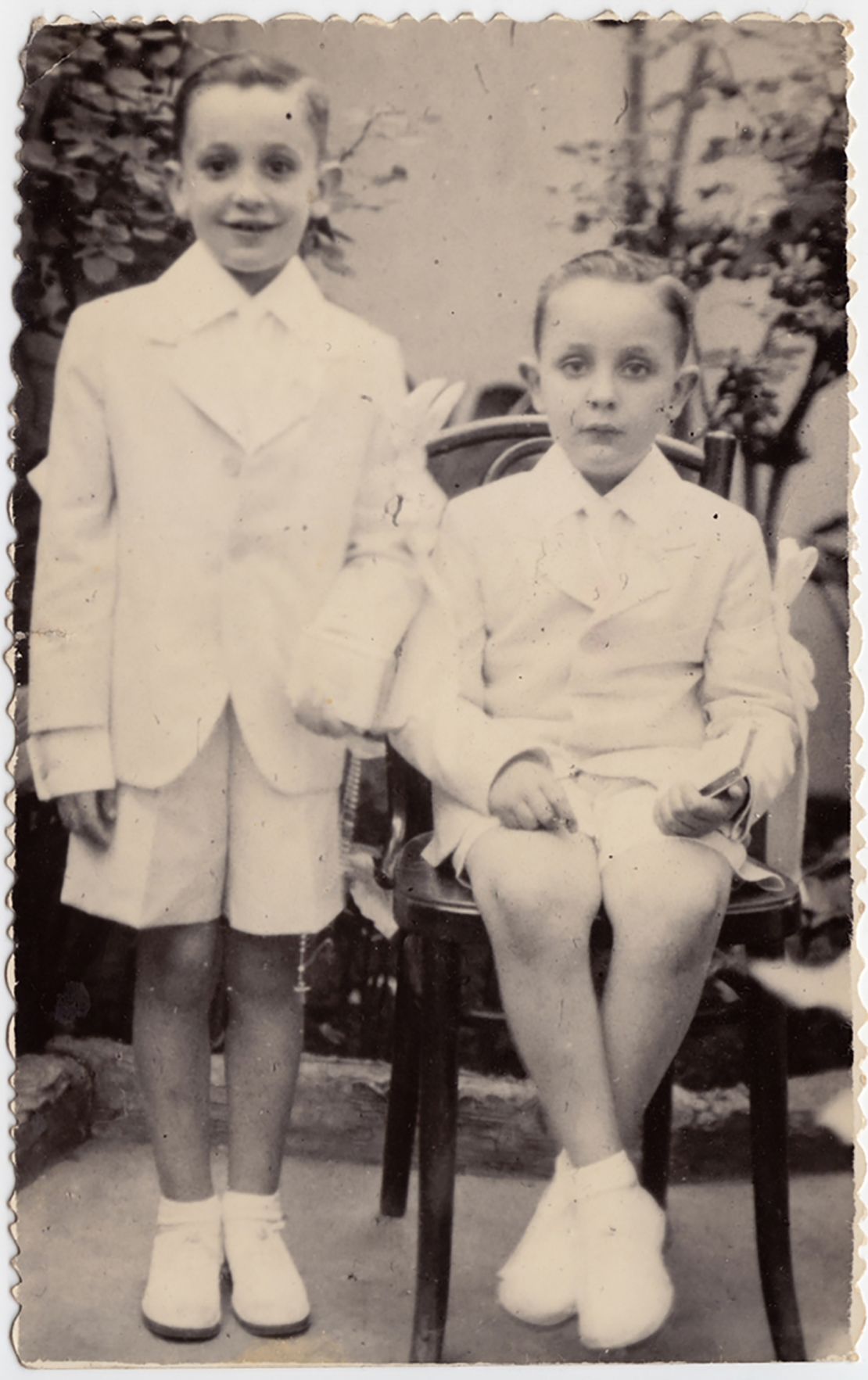
When he was 12, the Argentine even had a girlfriend who, decades later, was chased by the press after his election to the papacy.
Amalia Damonte told reporters in 2013 that the new pope had sent her a letter when they were both children. “He said to me, ‘If I don’t marry you, I’ll become a priest,” she recalled.
Years passed and Bergoglio indeed opted for priesthood. His deep spirit of service made him choose the Church, according to Crespo. Bergoglio entered the Jesuit religious order as a novice in 1958, was ordained in 1969 and became the sole archbishop of his native Buenos Aires in 1998.
He was made a cardinal in 2001 and served as president of the Argentine bishops’ conference from 2005 until 2011.
Bergoglio the priest and archbishop
As a Jesuit living under a vow of poverty, Bergoglio led a humble and austere life, forgoing even the slightest of luxuries. His rejection of the trappings of status once he became archbishop gave the world a hint of how his papacy would unfold years later.
He declined to live in the archbishop’s palace, choosing instead to live in a simple apartment. He also refused to use a chauffeured limousine, preferring to take the bus with ordinary people, and cooked his own meals.
“He never had a car, that was the reality. I used to travel with him on public transport. And when I bought a car, I used to give him a ride,” Crespo said.
The journeys with Archbishop Bergoglio included visits to the “villas” – shanty towns outside the capital – where he became a familiar face.
“He went to the villas to see who he could help. He (had) told me clearly: Look, I am going to be a priest because my aim is to be at the service of the people. For that, I’m going to the villas, I am going to go to the heart of the country,” Crespo recalled.
The austerity and simplicity of his life, along with a deep need to be close to the poor and marginalized, defined him as a priest and as a future pope, explained Argentine journalist Elisabetta Piqué, author of “Pope Francis: Life and Revolution.”
“He was considered a moderate archbishop… He was known as an archbishop that used to go to the villas and (who) used to have a very, very simple life,” Piqué told CNN.
Piqué met Bergoglio for the first time in 2001 for an interview in Rome, an encounter which sparked a friendship that lasted for decades. At that time, she described him as a shy man who surprised her.
“He was really an open-minded priest with whom you could talk about everything,” Piqué said.
A day after Cardinal Bergoglio became Pope Francis, on March 14, 2013, he called Piqué and asked her about the reaction in his native Argentina.
The new pope mentioned he had been to pray at the Basilica of Santa Maria Maggiore in Rome, where he would years later request to be buried, and then went in person to pay his lodging bill at the Paulus VI hotel at which he stayed during the conclave – a gesture that surprised everyone.
Later that month, Francis’s decision not to live in the papal apartment on the top floor of the Apostolic Palace but in the Casa Santa Marta, the Vatican City residence where cardinals stay during the conclave, was unexpected and considered a revolutionary act by the new pope, Piqué explained.
As archbishop in Buenos Aires, Bergoglio would celebrate Mass in a prison or a hospital or hospice, trying to reach the marginalized and open the church up to everyone, a tradition that continued during his papacy and became part of his legacy.
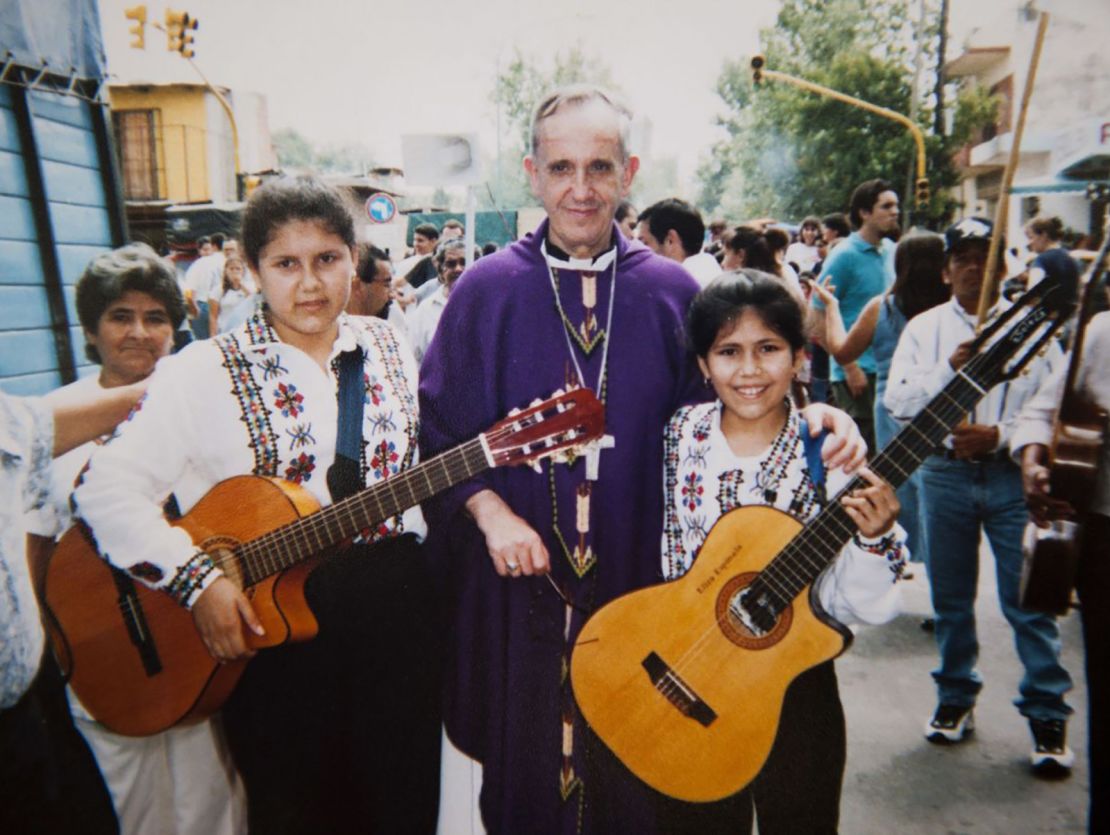
“His legacy is about an inclusive church, a church that is for all, not only for a small group of perfect people. This is a pope who speaks to everyone and who speaks specially to the sinners … We have seen him going to prisons all over the world. We have seen him on Holy Thursdays going to prisons and washing the feet of the prisoners,” Piqué said.
Emilce Cuda, an Argentine theologist who worked closely with Francis as secretary of the Pontifical Commission for Latin America, described him as a strategist who used humor to navigate the Vatican as pope.
“Any person who arrived to meet him was absolutely nervous but, in two or three minutes, Pope Francis could change the situation,” Cuda told CNN, explaining how he had the knack of finding the right word to spark humor and make people feel better.
That gift could be traced back to his early years. Bergoglio’s sense of humor had been a key part of his character since he was very young, and was an essential part of him, according to his sister Maria Elena. She told CNN en Espanol in 2013: “(He has a) great sense of humor, I think he got that from my father. When he had to be firm for something, he was, but with good humor.”
Crespo said that despite Bergoglio’s obvious talents, it had never occurred to his contemporaries that he would come to lead the Roman Catholic Church.
“I never imagined a classmate would become a pope. We would have thought that due to his intelligence he would become a minister, a position in public office, even president, but that he was going to be pope? It didn’t occur to any of us,” Crespo said.
He was a pope who never forgot his beginnings at the end of the world and always reached out to those on the peripheries, Piqué reflected. He stayed true to his friends too.
“One day in June 2013 the telephone rang, and a familiar voice said: ‘Hello Oscar, it is Jorge Mario,’ and I said, ‘The pope is calling me!’ Despite our friendship, I was still very surprised the pope called me,” Crespo said.


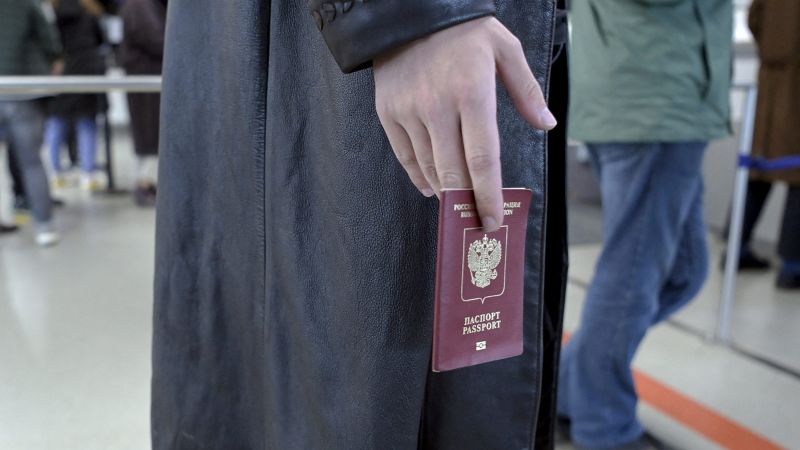
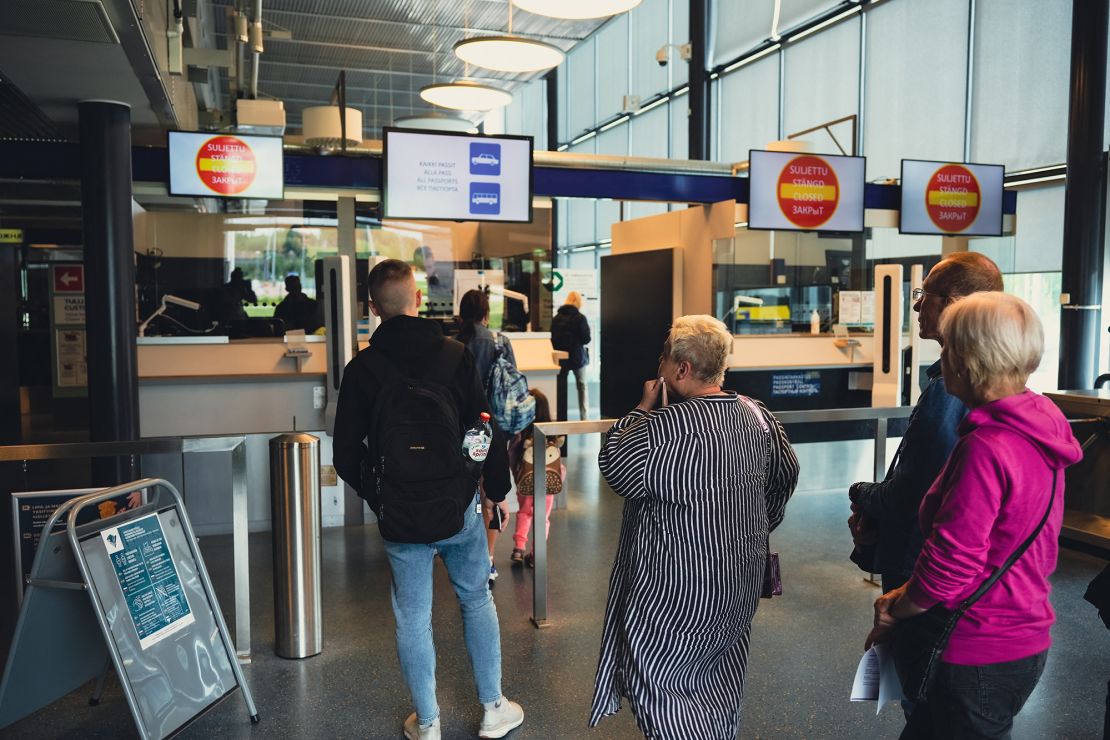

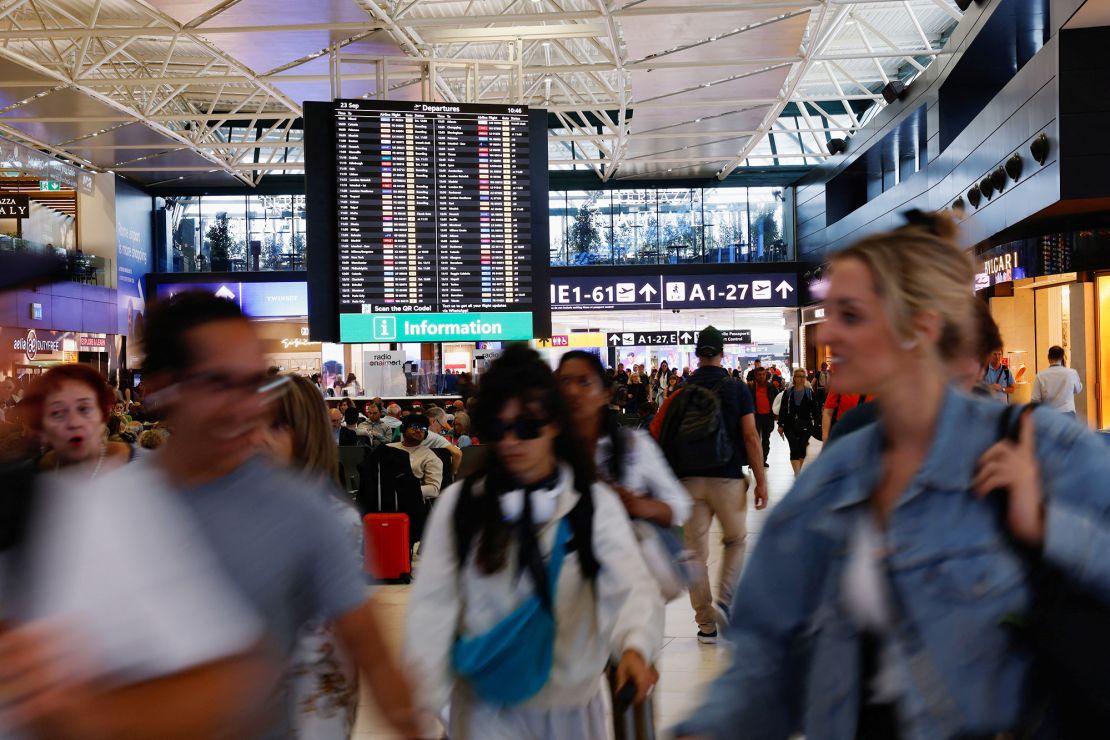



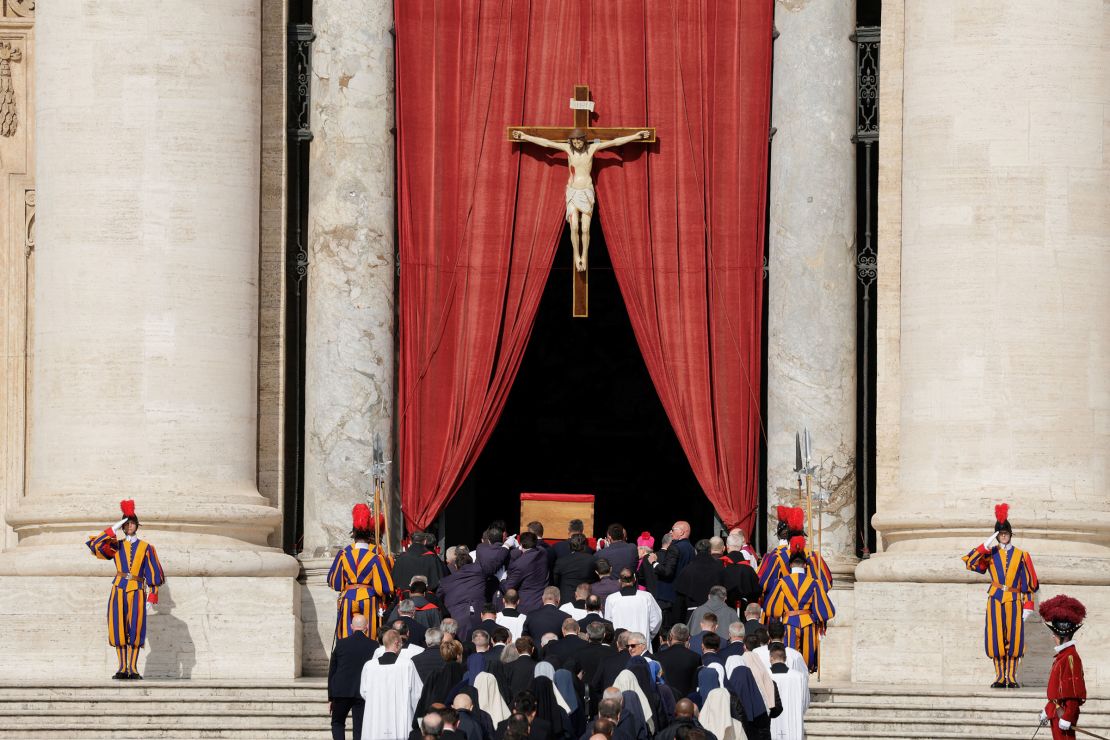

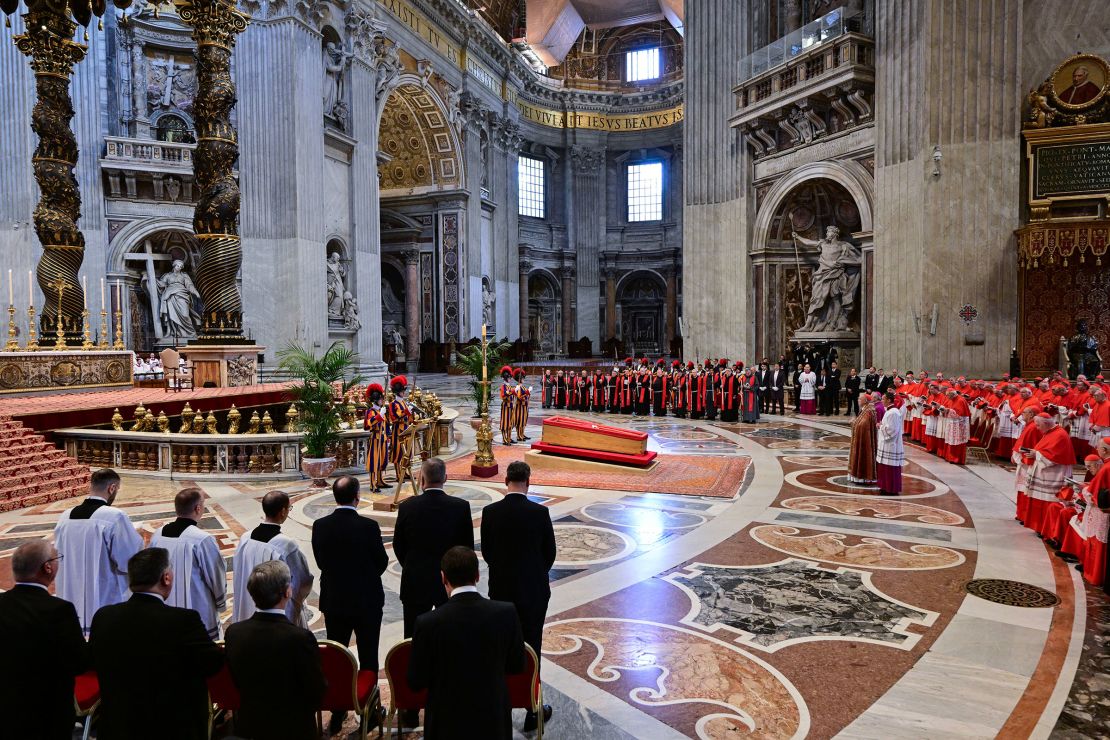

































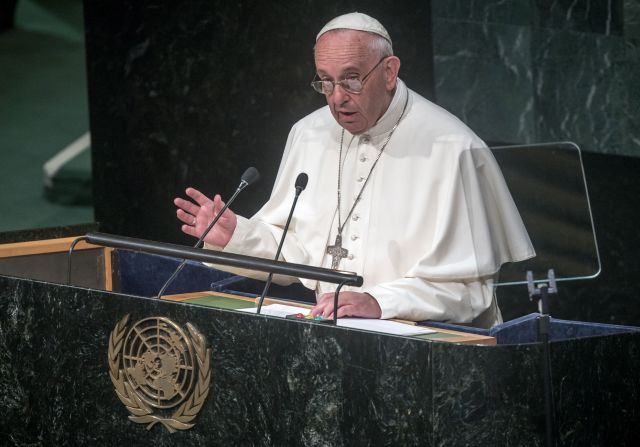 his speech, he urged world leaders to adopt concrete solutions to combat widespread poverty and environmental destruction.” class=”image__dam-img image__dam-img–loading” onload=’this.classList.remove(‘image__dam-img–loading’)’ onerror=”imageLoadError(this)” height=”2095″ width=”3000″ loading=’lazy’/>
his speech, he urged world leaders to adopt concrete solutions to combat widespread poverty and environmental destruction.” class=”image__dam-img image__dam-img–loading” onload=’this.classList.remove(‘image__dam-img–loading’)’ onerror=”imageLoadError(this)” height=”2095″ width=”3000″ loading=’lazy’/>





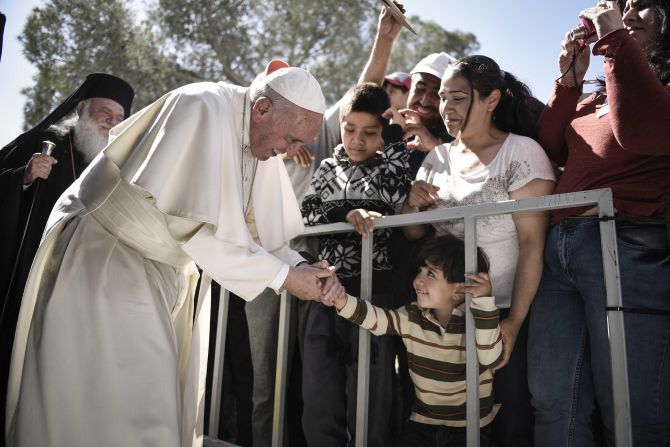 during a visit in which he showed solidarity with migrants fleeing war and poverty. ” class=”image__dam-img image__dam-img–loading” onload=’this.classList.remove(‘image__dam-img–loading’)’ onerror=”imageLoadError(this)” height=”1669″ width=”2500″ loading=’lazy’/>
during a visit in which he showed solidarity with migrants fleeing war and poverty. ” class=”image__dam-img image__dam-img–loading” onload=’this.classList.remove(‘image__dam-img–loading’)’ onerror=”imageLoadError(this)” height=”1669″ width=”2500″ loading=’lazy’/>
 was there to pay tribute to those who died in the Holocaust. ” class=”image__dam-img image__dam-img–loading” onload=’this.classList.remove(‘image__dam-img–loading’)’ onerror=”imageLoadError(this)” height=”1664″ width=”2500″ loading=’lazy’/>
was there to pay tribute to those who died in the Holocaust. ” class=”image__dam-img image__dam-img–loading” onload=’this.classList.remove(‘image__dam-img–loading’)’ onerror=”imageLoadError(this)” height=”1664″ width=”2500″ loading=’lazy’/>




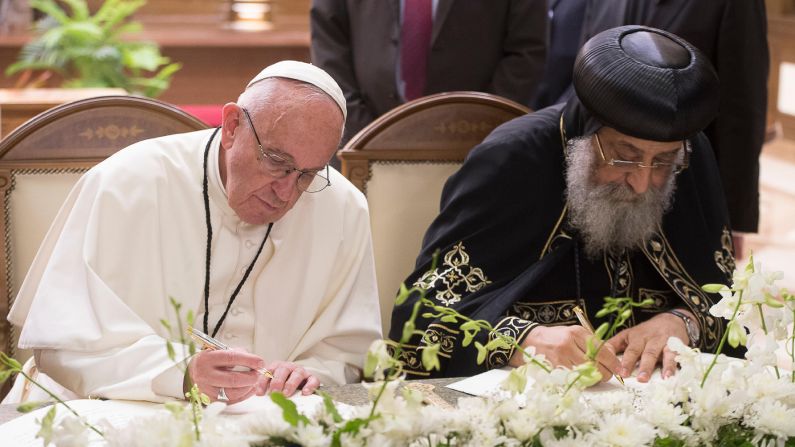 two-day trip to Egypt to forge Muslim-Christian brotherhood and show solidarity with the country’s persecuted Coptic Christian minority.” class=”image__dam-img image__dam-img–loading” onload=’this.classList.remove(‘image__dam-img–loading’)’ onerror=”imageLoadError(this)” height=”1569″ width=”2790″ loading=’lazy’/>
two-day trip to Egypt to forge Muslim-Christian brotherhood and show solidarity with the country’s persecuted Coptic Christian minority.” class=”image__dam-img image__dam-img–loading” onload=’this.classList.remove(‘image__dam-img–loading’)’ onerror=”imageLoadError(this)” height=”1569″ width=”2790″ loading=’lazy’/>
 private audience at the Vatican in May 2017. Joining the President are his wife, Melania, and his daughter Ivanka.” class=”image__dam-img image__dam-img–loading” onload=’this.classList.remove(‘image__dam-img–loading’)’ onerror=”imageLoadError(this)” height=”2966″ width=”5272″ loading=’lazy’/>
private audience at the Vatican in May 2017. Joining the President are his wife, Melania, and his daughter Ivanka.” class=”image__dam-img image__dam-img–loading” onload=’this.classList.remove(‘image__dam-img–loading’)’ onerror=”imageLoadError(this)” height=”2966″ width=”5272″ loading=’lazy’/>







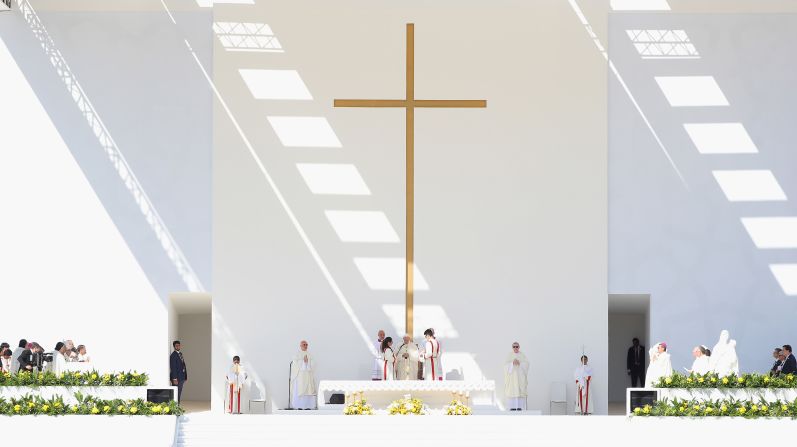 the first time a pope has visited an Arab Gulf state, and it was the first time a pope had celebrated Mass in the Arabian Peninsula, the birthplace of Islam.” class=”image__dam-img image__dam-img–loading” onload=’this.classList.remove(‘image__dam-img–loading’)’ onerror=”imageLoadError(this)” height=”1403″ width=”2500″ loading=’lazy’/>
the first time a pope has visited an Arab Gulf state, and it was the first time a pope had celebrated Mass in the Arabian Peninsula, the birthplace of Islam.” class=”image__dam-img image__dam-img–loading” onload=’this.classList.remove(‘image__dam-img–loading’)’ onerror=”imageLoadError(this)” height=”1403″ width=”2500″ loading=’lazy’/>






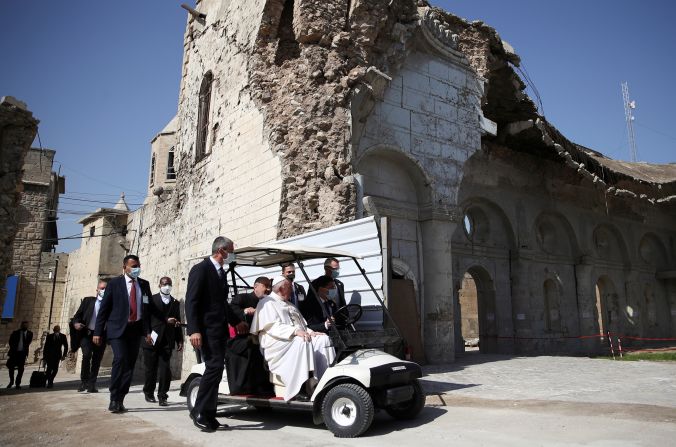 the first-ever papal visit to Iraq, and it was Francis’ first trip outside Italy since the start of the Covid-19 pandemic.” class=”image__dam-img image__dam-img–loading” onload=’this.classList.remove(‘image__dam-img–loading’)’ onerror=”imageLoadError(this)” height=”1654″ width=”2500″ loading=’lazy’/>
the first-ever papal visit to Iraq, and it was Francis’ first trip outside Italy since the start of the Covid-19 pandemic.” class=”image__dam-img image__dam-img–loading” onload=’this.classList.remove(‘image__dam-img–loading’)’ onerror=”imageLoadError(this)” height=”1654″ width=”2500″ loading=’lazy’/>

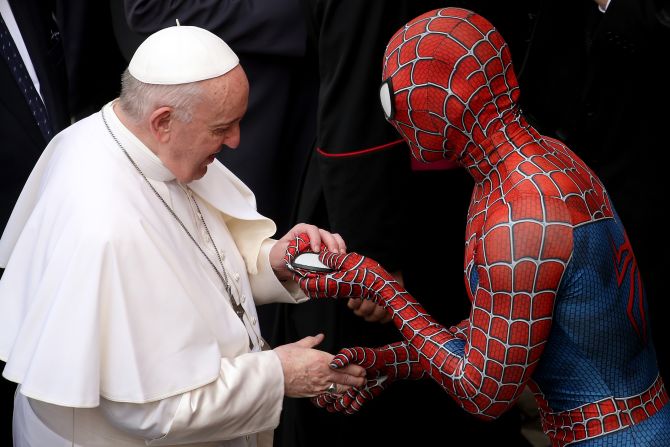 shakes hands with a man dressed as Spider-Man while visiting with people at the Vatican in June 2021. The masked man, who works with sick children in hospitals, also gave a Spider-Man mask to the Pope.” class=”image__dam-img image__dam-img–loading” onload=’this.classList.remove(‘image__dam-img–loading’)’ onerror=”imageLoadError(this)” height=”1667″ width=”2500″ loading=’lazy’/>
shakes hands with a man dressed as Spider-Man while visiting with people at the Vatican in June 2021. The masked man, who works with sick children in hospitals, also gave a Spider-Man mask to the Pope.” class=”image__dam-img image__dam-img–loading” onload=’this.classList.remove(‘image__dam-img–loading’)’ onerror=”imageLoadError(this)” height=”1667″ width=”2500″ loading=’lazy’/>

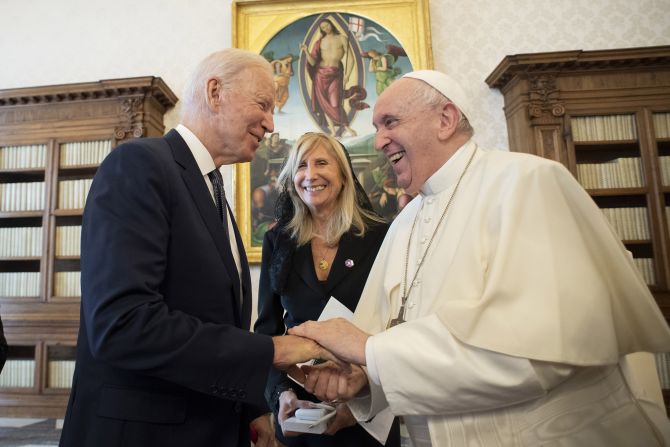 his trip to the Vatican in October 2021. Between them is Italian translator Elisabetta Savigni Ullmann. Challenge coins originated in the military, and this one included the insignia of a Delaware Army National Guard unit that Biden’s son Beau served in. Biden said during his visit that coins are given to “warriors and leaders” and that the pope is “the most significant warrior for peace I’ve ever met.” Biden, a devout lifelong Catholic, met with the Pope for 90 minutes and said he discussed “a lot of personal things” with the pontiff. It was the fourth meeting between Francis and Biden, but their first since Biden became President.” class=”image__dam-img image__dam-img–loading” onload=’this.classList.remove(‘image__dam-img–loading’)’ onerror=”imageLoadError(this)” height=”1667″ width=”2500″ loading=’lazy’/>
his trip to the Vatican in October 2021. Between them is Italian translator Elisabetta Savigni Ullmann. Challenge coins originated in the military, and this one included the insignia of a Delaware Army National Guard unit that Biden’s son Beau served in. Biden said during his visit that coins are given to “warriors and leaders” and that the pope is “the most significant warrior for peace I’ve ever met.” Biden, a devout lifelong Catholic, met with the Pope for 90 minutes and said he discussed “a lot of personal things” with the pontiff. It was the fourth meeting between Francis and Biden, but their first since Biden became President.” class=”image__dam-img image__dam-img–loading” onload=’this.classList.remove(‘image__dam-img–loading’)’ onerror=”imageLoadError(this)” height=”1667″ width=”2500″ loading=’lazy’/>



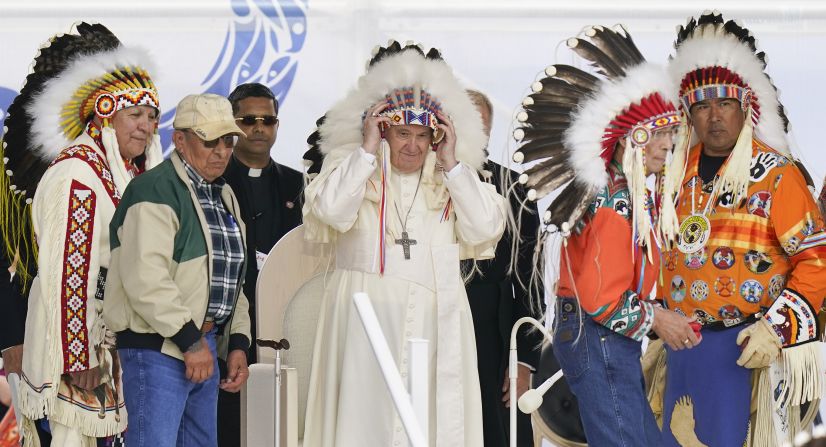 Francis spoke of his “sorrow, indignation and shame” over the Catholic Church’s role in the abuse of Canadian Indigenous children in residential schools. He apologized and promised a “serious investigation” into what happened.” class=”image__dam-img image__dam-img–loading” onload=’this.classList.remove(‘image__dam-img–loading’)’ onerror=”imageLoadError(this)” height=”1973″ width=”3646″ loading=’lazy’/>
Francis spoke of his “sorrow, indignation and shame” over the Catholic Church’s role in the abuse of Canadian Indigenous children in residential schools. He apologized and promised a “serious investigation” into what happened.” class=”image__dam-img image__dam-img–loading” onload=’this.classList.remove(‘image__dam-img–loading’)’ onerror=”imageLoadError(this)” height=”1973″ width=”3646″ loading=’lazy’/>

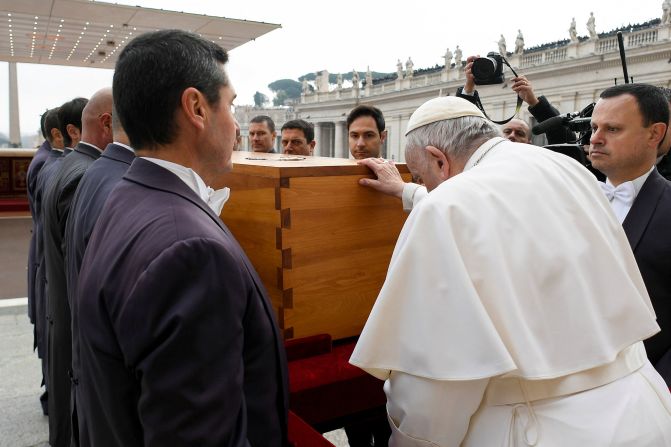 Benedict’s funeral was attended by tens of thousands at St. Peter’s Square.” class=”image__dam-img image__dam-img–loading” onload=’this.classList.remove(‘image__dam-img–loading’)’ onerror=”imageLoadError(this)” height=”2000″ width=”3000″ loading=’lazy’/>
Benedict’s funeral was attended by tens of thousands at St. Peter’s Square.” class=”image__dam-img image__dam-img–loading” onload=’this.classList.remove(‘image__dam-img–loading’)’ onerror=”imageLoadError(this)” height=”2000″ width=”3000″ loading=’lazy’/>
 Francis’ visit to the DRC — the first papal visit since 1985 — was part of a six-day trip that also included South Sudan. In those two countries, Catholics comprise about half of the population and the Church is a key stakeholder in health and education systems as well as in democracy-building efforts. ” class=”image__dam-img image__dam-img–loading” onload=’this.classList.remove(‘image__dam-img–loading’)’ onerror=”imageLoadError(this)” height=”1334″ width=”2000″ loading=’lazy’/>
Francis’ visit to the DRC — the first papal visit since 1985 — was part of a six-day trip that also included South Sudan. In those two countries, Catholics comprise about half of the population and the Church is a key stakeholder in health and education systems as well as in democracy-building efforts. ” class=”image__dam-img image__dam-img–loading” onload=’this.classList.remove(‘image__dam-img–loading’)’ onerror=”imageLoadError(this)” height=”1334″ width=”2000″ loading=’lazy’/>



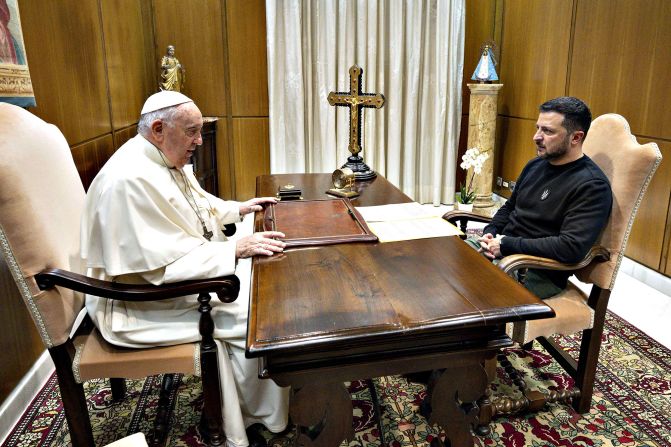 meets with Ukrainian President Volodymyr Zelensky at the Vatican in May 2023. It was the first face-to-face meeting between Zelensky and the Pope since Russia invaded Ukraine in February 2022. The Pope has been outspoken in his support for an end to the war.” class=”image__dam-img image__dam-img–loading” onload=’this.classList.remove(‘image__dam-img–loading’)’ onerror=”imageLoadError(this)” height=”1333″ width=”2000″ loading=’lazy’/>
meets with Ukrainian President Volodymyr Zelensky at the Vatican in May 2023. It was the first face-to-face meeting between Zelensky and the Pope since Russia invaded Ukraine in February 2022. The Pope has been outspoken in his support for an end to the war.” class=”image__dam-img image__dam-img–loading” onload=’this.classList.remove(‘image__dam-img–loading’)’ onerror=”imageLoadError(this)” height=”1333″ width=”2000″ loading=’lazy’/>
 He was on his way to a Rome hospital for abdominal surgery. The procedure was to repair a hernia that the Vatican said was causing “recurrent, painful and worsening” symptoms.” class=”image__dam-img image__dam-img–loading” onload=’this.classList.remove(‘image__dam-img–loading’)’ onerror=”imageLoadError(this)” height=”1333″ width=”2000″ loading=’lazy’/>
He was on his way to a Rome hospital for abdominal surgery. The procedure was to repair a hernia that the Vatican said was causing “recurrent, painful and worsening” symptoms.” class=”image__dam-img image__dam-img–loading” onload=’this.classList.remove(‘image__dam-img–loading’)’ onerror=”imageLoadError(this)” height=”1333″ width=”2000″ loading=’lazy’/>







 working session on artificial intelligence during the G7 summit near Bari, Italy, in June 2024. Francis, the first pope to participate in the summit, is determined to use the soft power of his office to try to ensure that the development of AI serves humanity and does not turn into a 21st-century Frankenstein’s monster.” class=”image__dam-img image__dam-img–loading” onload=’this.classList.remove(‘image__dam-img–loading’)’ onerror=”imageLoadError(this)” height=”1667″ width=”2500″ loading=’lazy’/>
working session on artificial intelligence during the G7 summit near Bari, Italy, in June 2024. Francis, the first pope to participate in the summit, is determined to use the soft power of his office to try to ensure that the development of AI serves humanity and does not turn into a 21st-century Frankenstein’s monster.” class=”image__dam-img image__dam-img–loading” onload=’this.classList.remove(‘image__dam-img–loading’)’ onerror=”imageLoadError(this)” height=”1667″ width=”2500″ loading=’lazy’/>
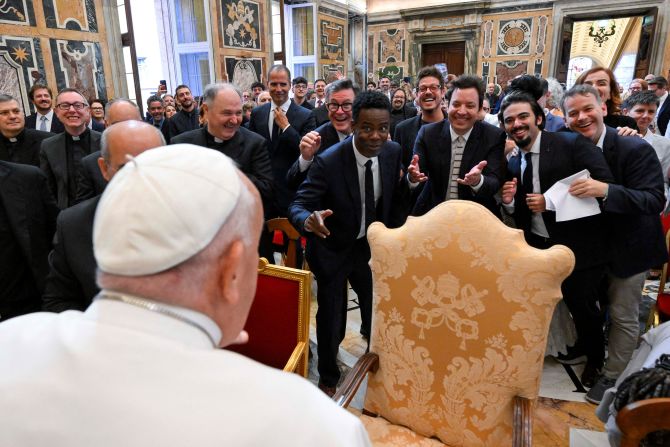 the pope told the comedians, adding that he has prayed for 40 years for a good sense of humor.” class=”image__dam-img image__dam-img–loading” onload=’this.classList.remove(‘image__dam-img–loading’)’ onerror=”imageLoadError(this)” height=”1667″ width=”2500″ loading=’lazy’/>
the pope told the comedians, adding that he has prayed for 40 years for a good sense of humor.” class=”image__dam-img image__dam-img–loading” onload=’this.classList.remove(‘image__dam-img–loading’)’ onerror=”imageLoadError(this)” height=”1667″ width=”2500″ loading=’lazy’/>


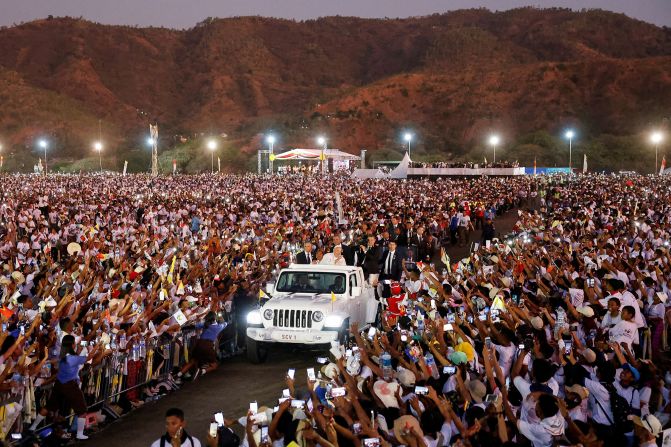 leading a Holy Mass at the Esplanade of Tasi Tolu in Dili, East Timor, on September 10, 2024.
leading a Holy Mass at the Esplanade of Tasi Tolu in Dili, East Timor, on September 10, 2024.



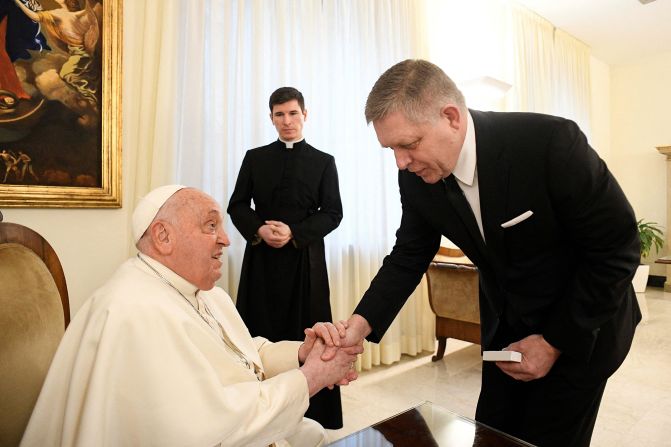 the pope was admitted to a hospital in Rome. It was later announced that he was battling pneumonia in both of his lungs.” class=”image__dam-img image__dam-img–loading” onload=’this.classList.remove(‘image__dam-img–loading’)’ onerror=”imageLoadError(this)” height=”1333″ width=”2000″ loading=’lazy’/>
the pope was admitted to a hospital in Rome. It was later announced that he was battling pneumonia in both of his lungs.” class=”image__dam-img image__dam-img–loading” onload=’this.classList.remove(‘image__dam-img–loading’)’ onerror=”imageLoadError(this)” height=”1333″ width=”2000″ loading=’lazy’/>

 he was discharged from the Gemelli Hospital in Rome in March 2025. Though he looked frail and struggled to speak, he addressed the crowd outside the hospital, thanking them and acknowledging one woman in the crowd who was holding flowers. He also gave a blessing, though he appeared to have some difficulty raising his arms.” class=”image__dam-img image__dam-img–loading” onload=’this.classList.remove(‘image__dam-img–loading’)’ onerror=”imageLoadError(this)” height=”1242″ width=”2000″ loading=’lazy’/>
he was discharged from the Gemelli Hospital in Rome in March 2025. Though he looked frail and struggled to speak, he addressed the crowd outside the hospital, thanking them and acknowledging one woman in the crowd who was holding flowers. He also gave a blessing, though he appeared to have some difficulty raising his arms.” class=”image__dam-img image__dam-img–loading” onload=’this.classList.remove(‘image__dam-img–loading’)’ onerror=”imageLoadError(this)” height=”1242″ width=”2000″ loading=’lazy’/>










